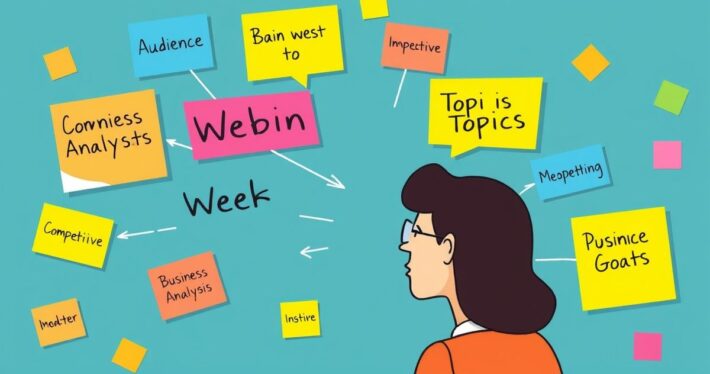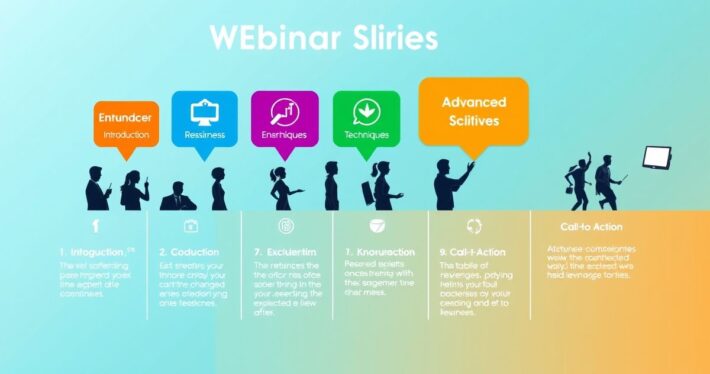How to Test a Webinar Topic Before Going Live

Introduction: Why Testing Your Webinar Topic Matters
Ever spent weeks crafting a webinar, only to find out it didn’t resonate with your audience? It’s a frustrating scenario that’s all too common. Testing your webinar topic before going live isn’t just a good idea—it’s essential. Think of it as a dress rehearsal for your big performance. You wouldn’t step on stage without practicing, right? The same goes for webinars. By testing your topic, you can ensure it’s not only engaging but also aligned with your audience’s needs and expectations. Let’s dive into the strategies and tools you can use to test your webinar topic effectively.
The Importance of Topic Validation
Why bother testing your webinar topic? Here’s the thing: your audience’s time is precious. If your topic doesn’t address their pain points or interests, they’re unlikely to attend—let alone convert. Topic validation helps you refine your focus, ensuring your webinar delivers real value. It’s like asking for directions before starting a journey. You’ll save time, avoid wrong turns, and reach your destination faster.
Step 1: Identify Your Target Audience
Before you can test your webinar topic, you need to know who you’re speaking to. Start by creating a detailed audience profile. Who are they? What are their pain points? What solutions are they seeking? For example, if you’re targeting small business owners, your webinar topic might focus on cost-effective marketing strategies. Case in point: a webinar titled “5 Marketing Strategies for Small Businesses on a Budget” is more likely to resonate than a generic “Marketing 101” session.
Step 2: Conduct Surveys and Polls
Surveys and polls are your best friends when it comes to topic testing. Tools like Google Forms, Typeform, or even social media polls can provide valuable insights. Ask your audience directly what they want to learn about. For instance, you could ask, “Which of these topics would you find most valuable for a webinar?” and provide a few options. The responses will give you a clear idea of what’s most relevant to your audience. Here’s a pro tip: keep your surveys short and to the point. People are more likely to complete them if they’re quick and easy.
Step 3: Leverage Social Media
Social media is a goldmine for topic testing. Share your webinar topic ideas on platforms like LinkedIn, Facebook, or Twitter and ask for feedback. You can also join relevant groups or forums where your target audience hangs oet. For instance, if your webinar is about digital marketing, participating in LinkedIn groups dedicated to marketing professionals can provide valuable insights. Look for comments, likes, and shares to gauge interest levels.
Step 4: Analyze Competitor Webinars
Competitor analysis can offer valuable clues about what works and what doesn’t. Check out webinars hosted by your competitors. What topics are they covering? How is the audience responding? While you don’t want to copy their ideas, understanding what’s already out there can help you identify gaps and opportunities. For example, if most competitors focus on advanced topics, there might be an underserved niche for beginner-level content.
Step 5: Use a Minimum Viable Webinar (MVW)
A Minimum Viable Webinar (MVW) is a scaled-down version of your planned webinar. It’s like a prototype—you test the core idea without investing too much time or resources. Host a short, informal webinar (think 15-20 minutes) and invite a small group of your target audience. Gather feedback through post-webinar surveys or direct Q&A sessions. This approach allows you to refine your topic and content based on real audience reactions, reducing the risk of a flop when you go live.
Step 6: Test with a Small Paid Audience
Another effective strategy is to test your webinar topic with a small, paid audience. Platforms like Facebook Ads or Google Ads allow you to target specific demographics and gauge interest levels. Create a landing page for your webinar and promote it to a small segment of your target audience. Monitor the click-through rates (CTR) and sign-ups to determine the topic’s appeal. If the response is lukewarm, it might be time to pivot or tweak the topic.
Step 7: Evaluate Engagement Metrics
Once you’ve gathered feedback and conducted initial tests, it’s time to evaluate the engagement metrics. Look at data like webinar attendance rates, audience retention, and Q&A participation. High engagement levels indicate that your topic resonates with your audience. Conversely, low engagement might signal the need for adjustments. For example, if attendees are dropping off halfway through, the topic might not be as compelling as you thought.
Real-World Example: Testing the Waters
Consider a real-world example: a marketing agency planning a webinar on “Social Media Strategy for E-commerce Businesses.” Before going live, they conducted a survey among their email subscribers, asking which specific aspects of social media strategy they wanted to learn about. Based on the responses, they focused on topics like “Optimizing Instagram Ads” and “Leveraging User-Generated Content.” They also hosted a short MVW to gauge interest and refine their content. As a result, the live webinar had a 25% higher attendance rate compared to their previous ones.
Common Pitfalls to Avoid
While testing your webinar topic, there are a few pitfalls to watch out for. First, don’t rely solely on your instincts. What you think is a great topic might not resonate with your audience. Second, avoid testing topics that are too broad. Narrow down your focus to address specific pain points or interests. Finally, don’t ignore negative feedback. Constructive criticism is invaluable for refining your topic and ensuring it hits the mark.
Conclusion: Test, Refine, and Succeed
Testing your webinar topic before going live is a critical step in ensuring its success. By identifying your target audience, conducting surveys, leveraging social media, and using tools like MVWs, you can validate your ideas and refine your content for maximum impact. Remember, a well-tested topic not only engages your audience but also drives conversions, making your webinar a true success. So, are you ready to test your webinar topic and take your webinar game to the next level?



